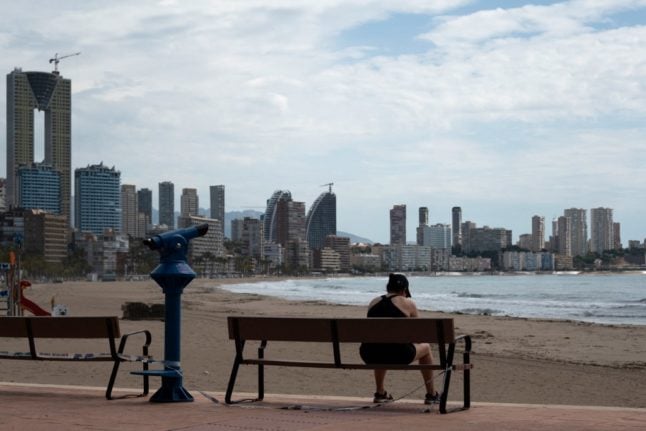Despite Brexit making it considerably harder for many UK nationals to move to España as non-EU nationals, Spain’s British population continues to grow.
That’s according to new data from Spain’s National Statistics Institute (INE), which shows that the number of Brits residing in Spain has actually increased by 11,047 over the past year.
At the start of 2023, there were 293,171 UK nationals who were residents in Spain, according to padrón census records from town halls across the country.
It’s no surprise that Spain is the European country with the biggest British diaspora, as it’s long been popular with Brits who come here to retire, to work, and look for a better quality of life in the sun.
With the exception of Romanians (627,000 residing in Spain), UK nationals represent Spain’s biggest European foreign population group, with more Britons than Italians (275,000), Germans (116,000) and French (115,000) residents in Spain.
Twenty-five years ago, in 1998, there were 75,000 Britons registered as Spanish residents. And over the past two decades, there have been times when the number of Brits on record was even higher than in 2023, such as in 2010, when there were 387,000 Brits in Spain.
So which areas of Spain do Britons tend to live in nowadays?
Most popular Spanish regions for Brits to live in
It might not come as a surprise to discover that in early 2023 the biggest number of Brits in Spain lived in the southern region of Andalusia, with a total of 92,180.
This was followed closely by the Valencia region with a total of 87,699, and then the Canary Islands with 29,631.
Other autonomous communities with a sizeable British population are Catalonia with 24,689, the Balearic Islands with 19,569, Murcia with 17,562 and the Spanish capital of Madrid with 11,831.
The number of UK nationals living in other Spanish regions in 2023 is as follows:
Galicia: 2,373
The Basque Country: 1,648
Asturias: 1,060
Aragón: 1,055
Castilla y León: 1,033
Castilla-La Mancha: 968
Cantabria: 640
Extremadura: 507
Navarra: 421
La Rioja: 214
We’ve created a map to showcase how Brits tend to prefer to live in coastal regions in the south and the east of the country, particularly along the Mediterranean, where the weather is generally warmer and sunnier than the northern regions along the Cantabrian Sea and the Atlantic.
Most popular Spanish provinces for Brits to live in
Meanwhile, the latest data from the Padrón register also shows where the majority of Brits live on a provincial level. And unsurprisingly the provinces housing the Costa Blanca and the Costa del Sol are the most popular.
Of Spain's 50 provinces, Alicante in the Valencia region comes top once again with 76,739 Brits.
This coastal province is of course home to popular spots among Brits such as Benidorm, Torrevieja and Jávea, where those from Blighty represent anywhere between 10 and 30 percent of the total population.
But there are small villages dotted across the province where Brits make up half or even more of the total.
READ MORE: The places in Spain where Brits outnumber locals
The Spanish province with the second biggest British population in 2023 is Málaga province with 56,019. Similarly, places like Benahavís, Marbella or Estepona have a sizeable British representation.
In third place are the Balearic Islands, which isn't classified as a province but rather a region made up of four main islands, with Mallorca housing the bulk of the 20,000 Brits who live in the archipelago.
Murcia, which is also not a province but a region, has its British population living mainly along the coast and in particular in the municipality of Mazarrón, where a 8,000-strong British population make up a third of residents.
Other worthy mentions are Barcelona province, which of course includes the Catalan capital and is home to 17,272 Brits, Almería province in eastern Andalusia which has 14,180 Brits, and the Canary Islands' two provinces: Santa Cruz de Tenerife with 15,804 Brits and Las Palmas with 14,447.
Differences in the data
According to the latest figures from Spain's Ministry of Migrations, there are a total of 409,763 Brits living in Spain. This is over 115,000 more than the figure stated by Spain's stats body INE.
The massive disparity can partly be explained by the fact that the data from Spain's Ministry of Migration is based on the number of UK nationals who have the newer TIE residency cards or who hold the old green residency certificates, rather than using padrón census records.
According to the ministry, approximately 47 percent of Brits in Spain have a TIE card, while the other 53 percent are still using their EU green residency certificates instead.
READ ALSO: How much money do Britons need to move to Spain in 2023?



 Please whitelist us to continue reading.
Please whitelist us to continue reading.
Member comments